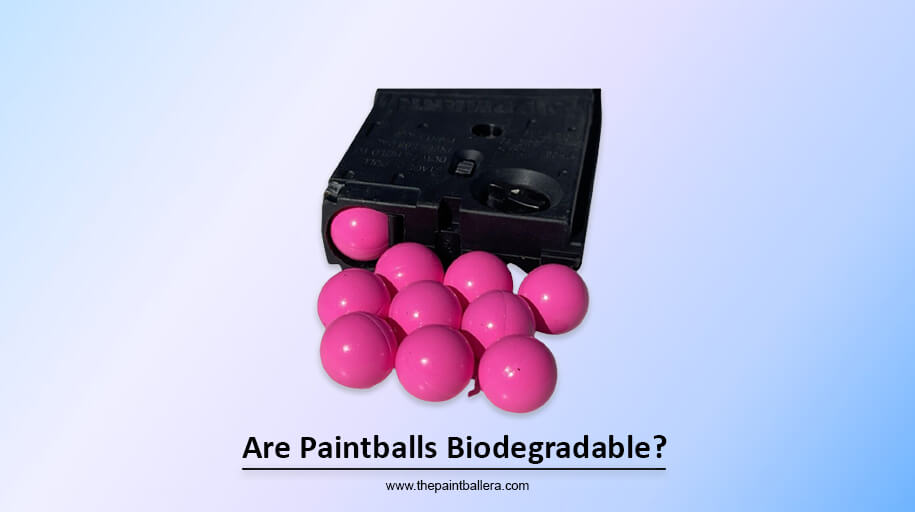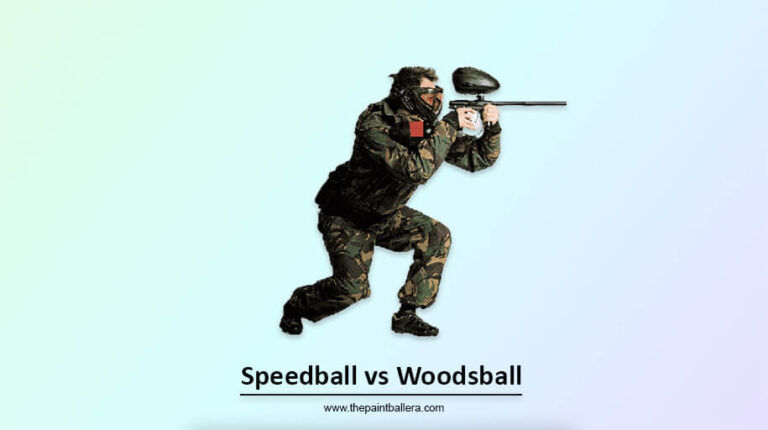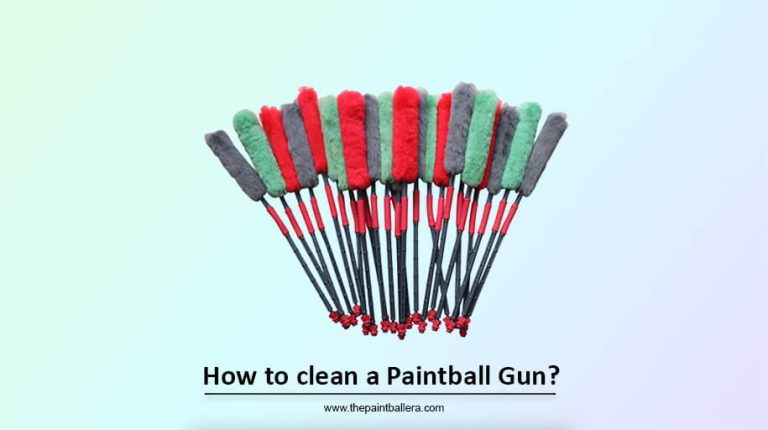Are Paintballs Biodegradable? – Nature & Markers

Paintball is an environmentally safe sport. They are biodegradable because they break down over time. This game is trendy in outdoor activities and brings joy to players.
If you are still curious and want to know in detail that paintballs are biodegradable, this article is for you.
How are Paintballs Made?
The formulation of paintball is different compared to other paints. When the paintball game came as a new game, manufacturers used oil-based fill; that is, they used horse gelatin oil and mixed it with colour. But now, manufacturers use polyethene glycol and water-based dyes as the main ingredients. Glycol is used here because it has a low freezing point, around 15 degrees Fahrenheit. That is why paintballs do not freeze in frigid weather.
But still, paintballs are challenging to shoot in cold weather, not because they freeze but because they shrink. Therefore, it is recommended not to play paintballs in cold weather.
What is the difference between Traditional Paintball and Paintballing Paint?
Traditional paintballs are made of chemicals, solvents or pigments. When the paintball game was new in the field of play, the biggest problem was its composition, which caused poison. When the traditional oil-based pigment and solvent composition for paintballs became illegal, manufacturers began to make eco-friendly paintballs that players use today that are not harmful.
So, the difference is that today’s paintballs are eco-friendly and safe. Now, paintballs are designed in such a way that they are safe for your skin and health. They disappear over time, which is why paintballs are biodegradable. Also, paintballs have an expiry date, and the outer shell is made of gelatin.
Some paintballs contain non-biodegradable fillings, such as oil-based paints and synthetic paints. So, they can harm the environment if not disposed of appropriately. It is important that whenever you buy a paintball, you must check the label on it to see if the paintball is biodegradable or not.
Now, I move further to discuss the different parts of paintball.
Different Parts of the Paintball
Paintballs have two parts.
Outer shell
The outer shell of the paintball is made of food-grade materials, i.e. manufacturers use gelatin in it. Gelatin is a protein obtained from collagen from an animal’s body part.
Inner part
The paintball is made of polyethene glycol (PEG), and manufacturers use iodine for colouring. Polyethylene glycol is well known for being a food-grade and non-toxic material. It is water soluble. So it will dissolve when paintball comes in contact with water due to rain or other reasons.
How Long Does It Take for Paintballs to Biodegrade?
Paintballs usually take 2 to 3 weeks to biodegrade. The process of paintball being biodegradable depends on the paints’ ability to dissolve with rain. As the ingredients used in paintball are water soluble, it is crucial to expose them to outside air. This way, the paintballs will decompose quickly. But if paintball is played indoors, the gelation shell of the paintball will not decompose fast because it will not be exposed to rain.
Let’s discuss the advantages and disadvantages of biodegradable paintballs.
Advantages of Biodegradable paintballs:
After playing the paintball game, when the field gets dirty due to the paint, use a water hose on it because the paintballs can dissolve in water. If you do not clean them yourself, since they are biodegradable, they decompose themselves.
Disadvantages of Biodegradable paintballs:
These paintballs have a short lifespan. As soon as you expose paintballs to air, they begin to decompose. When you buy paintballs, use them early by playing with players in the first few weeks or months, depending on the brand you used. Because keeping them for too long distorts their shape and makes them difficult to fire with many paintball guns.
Paintballs cannot be reused once fired. So paintballs are expensive because every time you have to buy new paintballs.
Signs of Expired Paintballs
As I mentioned above, paintballs have a limited lifespan. To check whether the paintballs are expired before playing, test that they break down easily after firing a paintball. If yes, they are suitable for use. But if you have stored them for a long time, they become soft with time and don’t break easily, so when they hit the player, they cause pain and bruises. If so, you can use them in the garden for practice or throw them in the dustbin.
Do Paintball Manufacturers Care About the Environment?
When the paintball sport first came out, players’ clothes were ruined by playing it, which was not easily cleaned, and the problem of buying new clothes was enough to discourage people from playing more paintball games, which caused a decrease in revenue. Looking at this problem, paintball manufacturers decided to make water-soluble paintballs. Non-toxic, biodegradable paintballs are easy to use for sports and do not harm players and the environment.
Impact of Non-Biodegradable Paintballs on the Environment
Non-biodegradable paintballs are harmful to aquatic life. When aquatic animals are exposed to paint present in non-biodegradable paintballs, this can affect their health. So, it is advisable not to play with non-biodegradable paintball near rivers or lakes.
Plastic paintball shells do not biodegrade; if used in a paintball game, the plastic pellets will scatter in the air, cause pollution, and, if consumed by wild animals, will adversely affect animal health.
How Are Biodegradable Paintballs Better for the Environment?
Biodegradable paintballs are designed in such a way that they do not pollute the environment where you are playing. In outdoor paintball fields, it is impossible to easily collect and clean the paintball shells and the paint after the game. Biodegradable paintballs decompose by themselves. If paintball shells were non-biodegradable shells, a large amount of plastic would be spread, and the plastic would pollute the environment. In this case, using biodegradable paintballs is good for the environment.
Final Thoughts:
Paintballs are not harmful to you if they are organic. When the paintball game first emerged, manufacturers used oil-based fill, which is non-biodegradable and detrimental to the environment. But now paintballs use gelatin, which is protein, and polyethene glycol as filling, and manufacturers use iodine for colouring. So when these paintballs hit you, it doesn’t harm your skin.
Are paintball shells biodegradable? With this question, this article also tells you how long it takes paintballs to biodegrade.
Before playing, you must check the paintball’s expiry date. If the paintballs have been stored for a long time, they won’t break easily. Keeping paintballs for too long also distorts their shapes.
I have also shown you what different parts of biodegradable paintballs are, what substances they use, and their advantages and disadvantages. Apart from this, some frequently asked questions are also answered in this article. I hope your confusion will clear after reading this article.
Frequently Asked Questions:
If you have any questions from some of the questions below, I have answered them so your confusion can be clear.

![Can you go Paintballing while Pregnant? – [Safety Alert]](https://thepaintballera.com/wp-content/uploads/2023/08/Can-You-Go-Paintballing-While-Pregnant-768x430.jpg)




